Soft, foldable smartphones are all the rage, with prototypes by Lenovo and LG, or Samsung’s patents and ongoing rumours on such innovations which everybody expected at this year’s CES in Las Vegas. What about a new Apple device for 2017, to celebrate the iPhone’s tenth anniversary? What are the advantages of flexible displays? Emedia gets you ready for the next major leap in the history of connected, mobile displays.
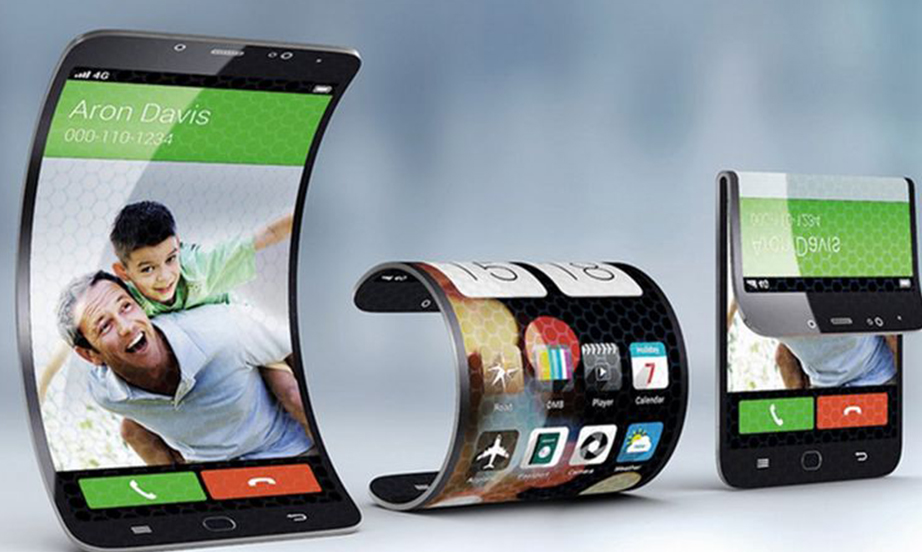
LG, with their 18-inch roll-up OLED display which showcased at the 2016 Consumer Electronics Show, impressed everybody and left them expecting soon a brand new generation of displays, that you can roll up like paper (see below), for tablets, smartphones, smart watches and televisions alike.
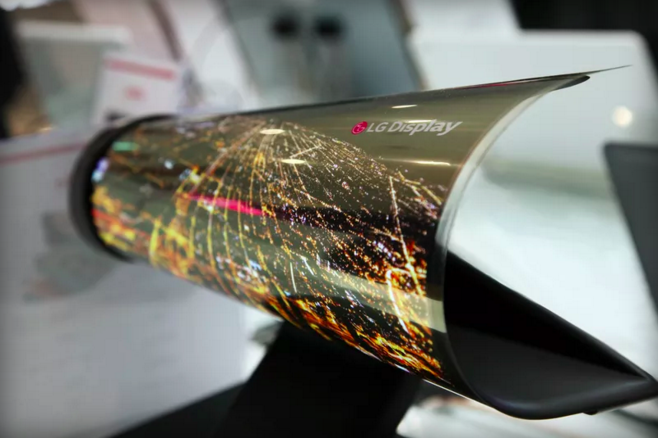
This year, Samsung got rumours going ahead of CES 2017. Expectations of a potential new foldable Galaxy device were raised by a patent filed by the South Korean company. After releasing the Galaxy S Edge smartphones with curved edges in 2014, Samsung’s new project wasn’t a full roll-up display such as their rival LG, but a display that you can fold several times or bend, as shown on the graphs below.
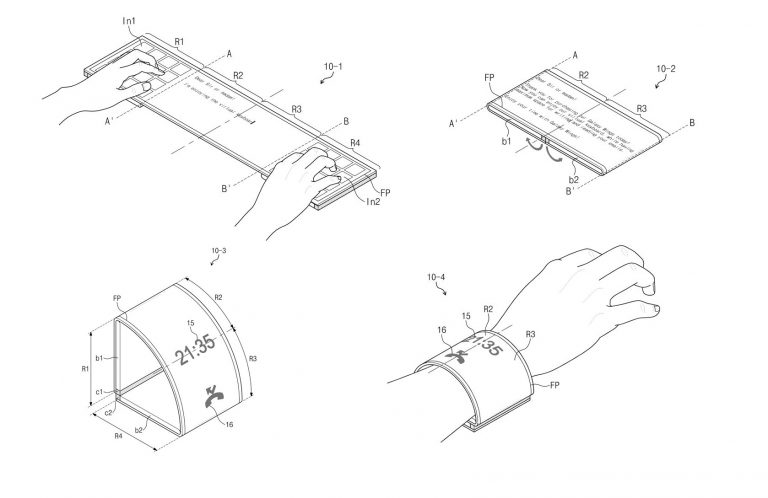
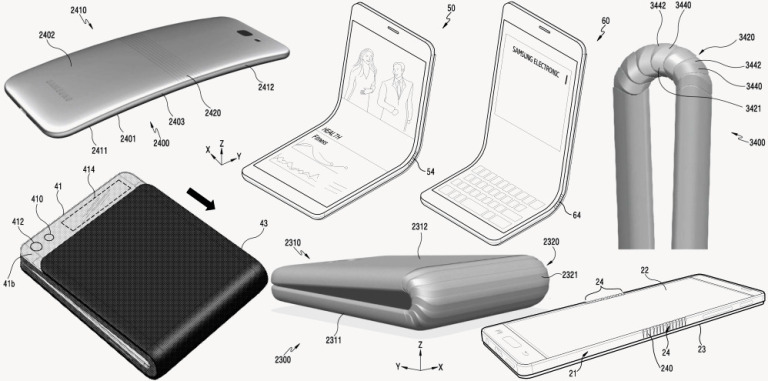
Apple has also filed several patents for flexible displays and foldable smartphones. Their latest patent (see below) was filed in the US last autumn, but observers find it rather unrealistic. And yet, 2017 could be a very symbolic year for Apple, with the release of a revolutionary new product. Ten years ago, on 9th January 2007, Steve Jobs unveiled the very first iPhone. Since then, Apple has sold 1 billion iPhones.
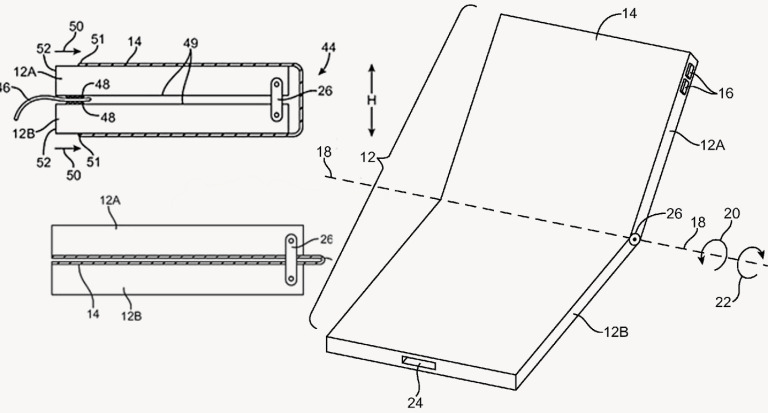
2017: the year of foldable smartphones?
Flexible displays are still a marginal commercial phenomenon. But we now know that Samsung and LG (now a partner of Apple, Google and Microsoft for this technology) have already invested heavily in production units of LED flexible displays.
2017 could be the year when this new trend takes off, mainly for smartphones, tablets and watches. But according to IHS Markit’s forecast, we’ll have to wait several years before flexible displays are available for hybrid devices, TVs, car displays, and VR devices.
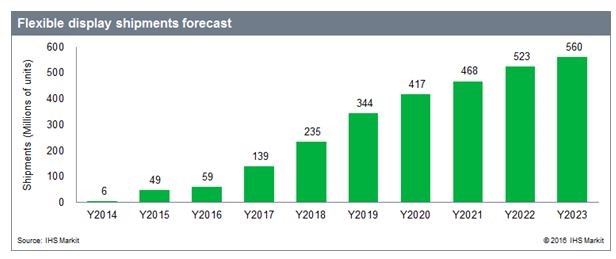
What’s the point of a foldable device?
Let’s start with flexible displays for connected watches. More comfortable to wear, wider, thinner displays, higher definition, less energy-consuming thanks to OLED technology, for the next generation of watches and its users, the advantages of flexible displays are obvious.
For mobile devices, these characteristics are rather similar. The drawings from patent files shown above suggest devices with wider displays such as phablets, but a lot less cumbersome once folded, thus even better-suited to mobile uses.
Sources : Sqwabb, IHS Markit

















